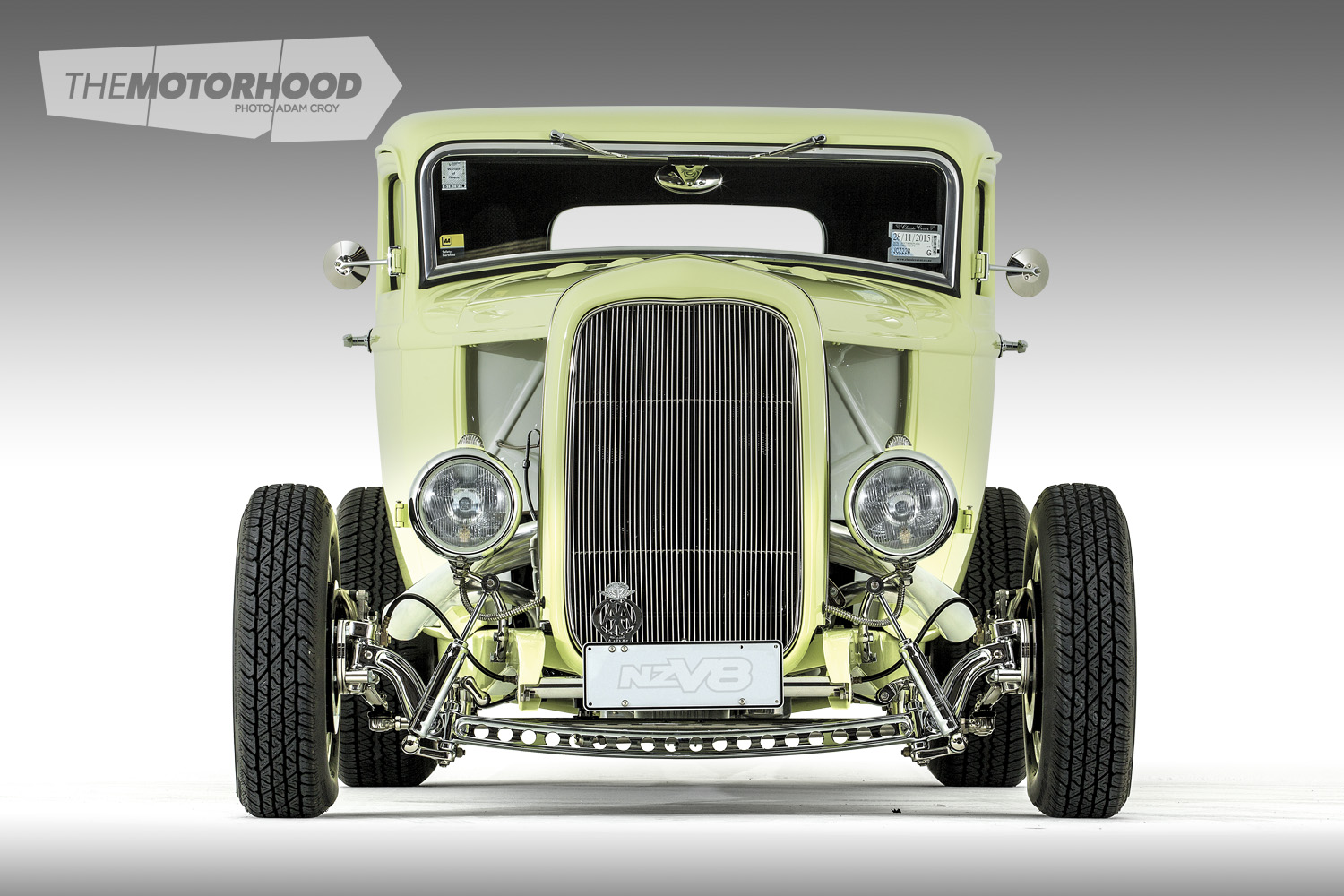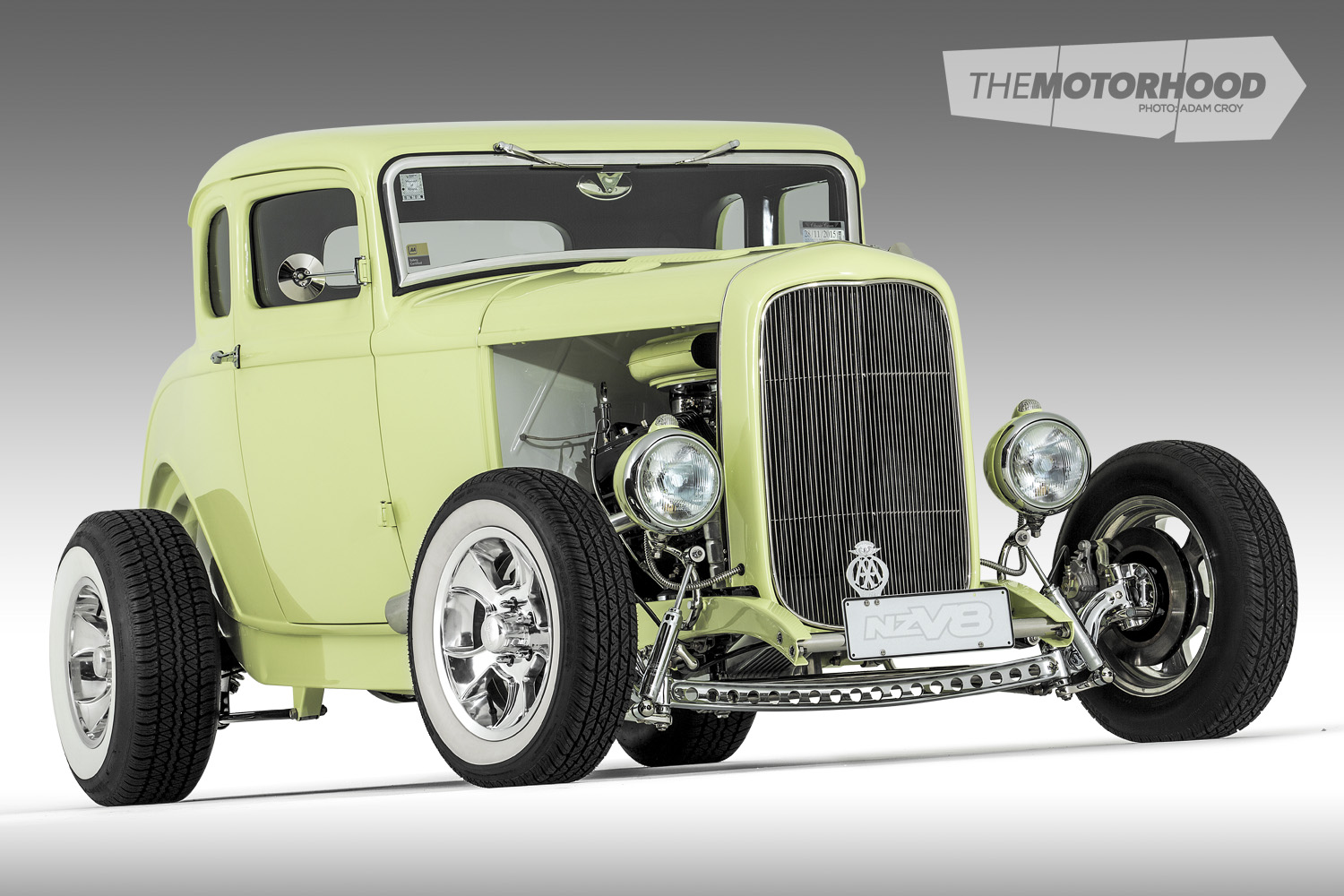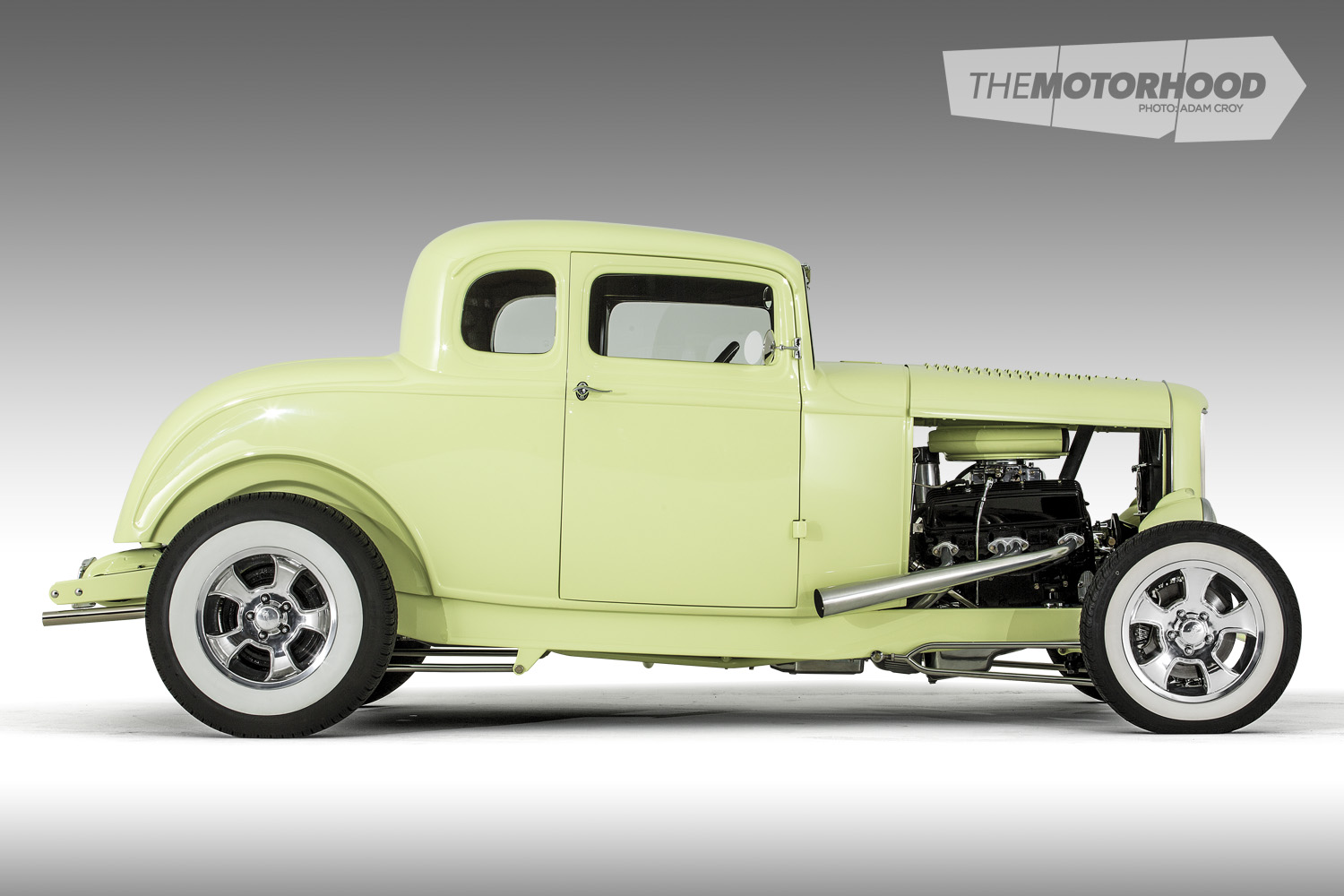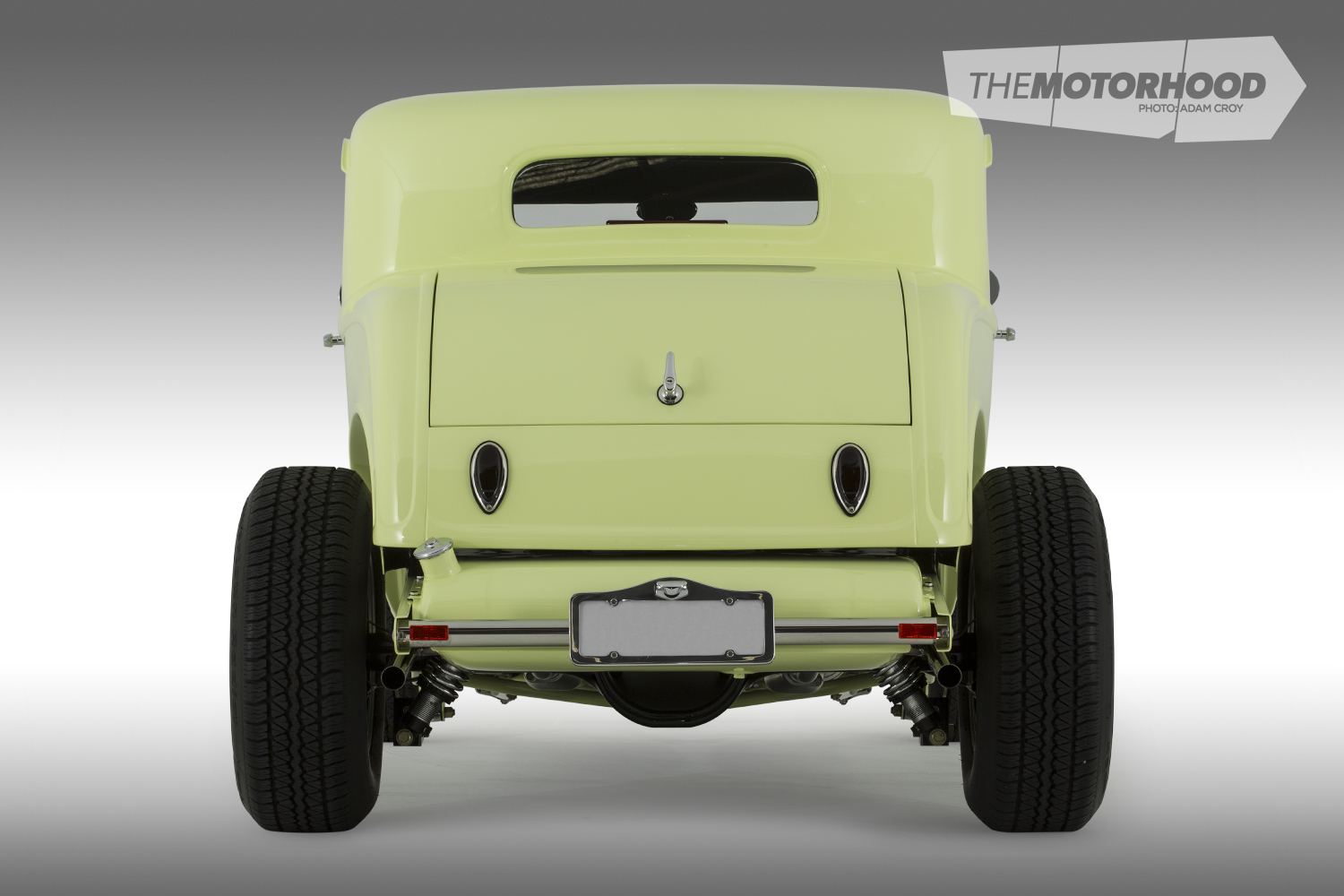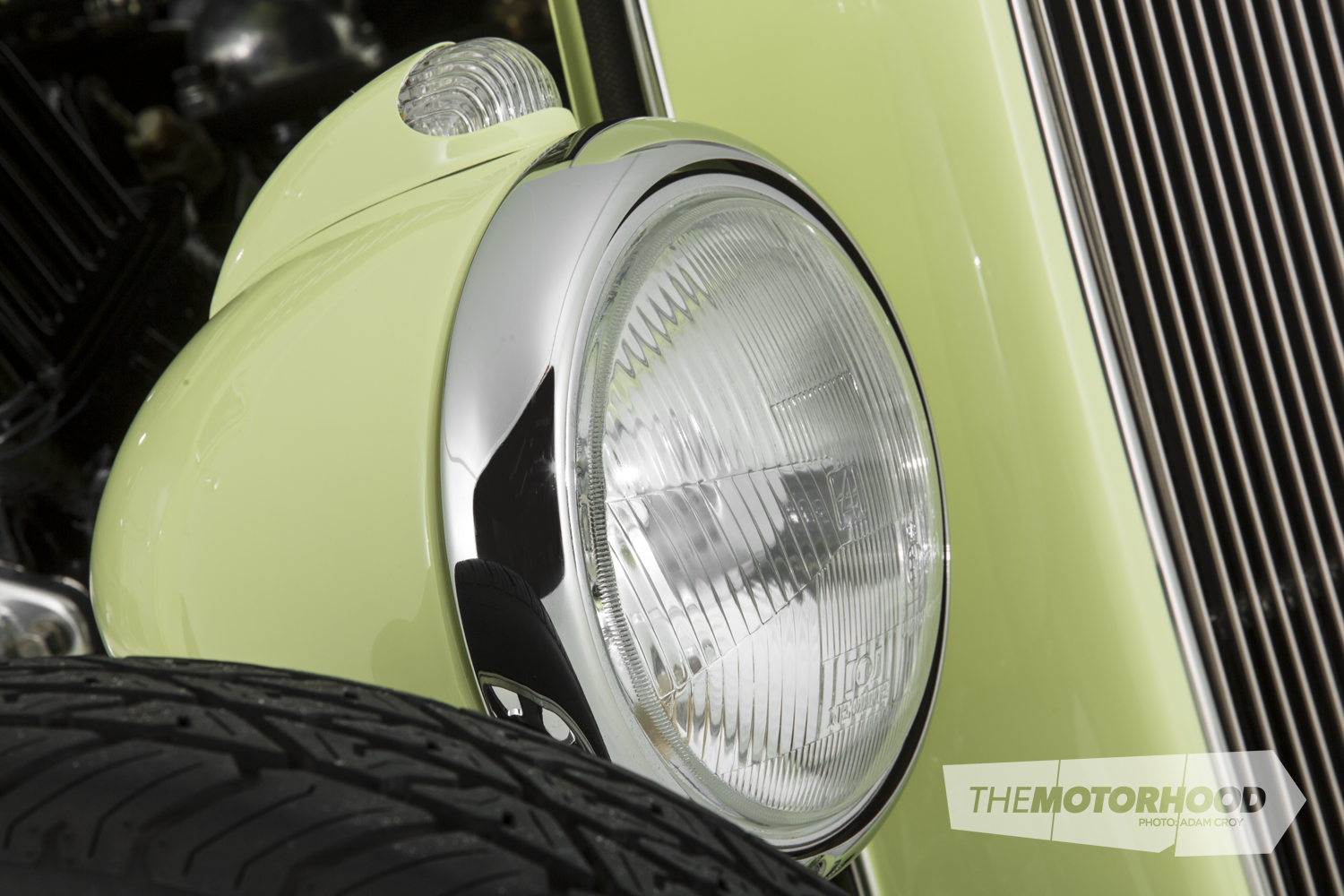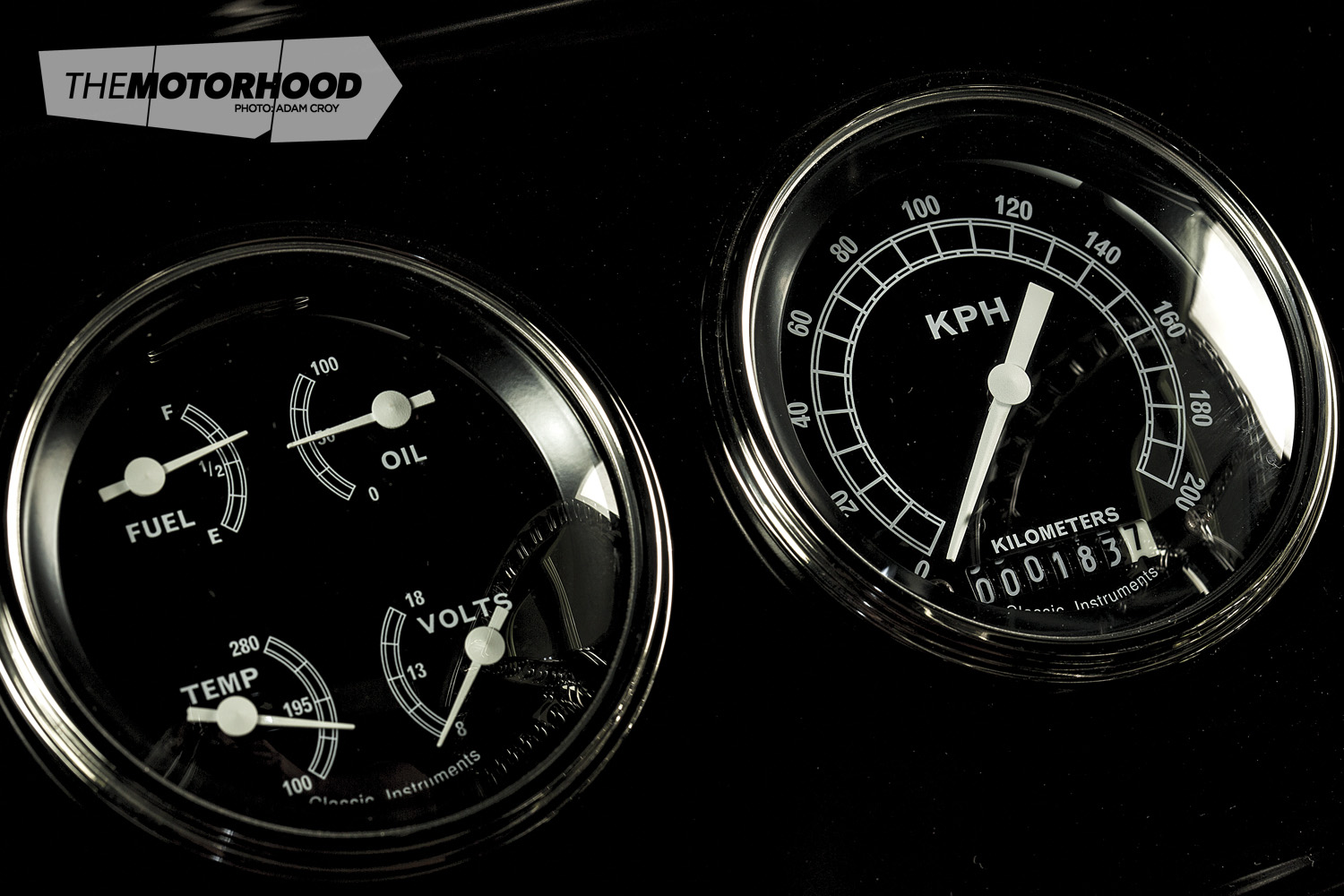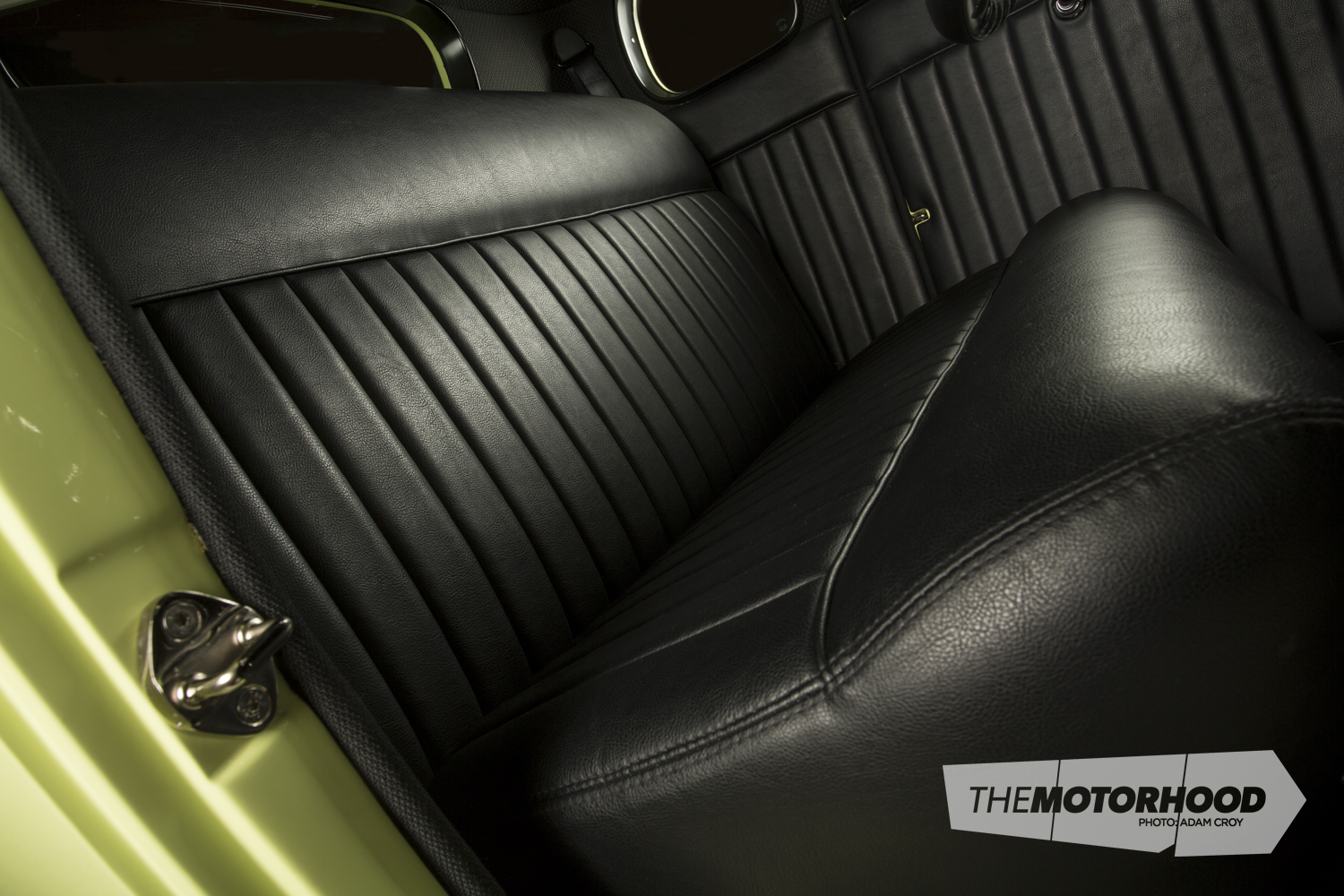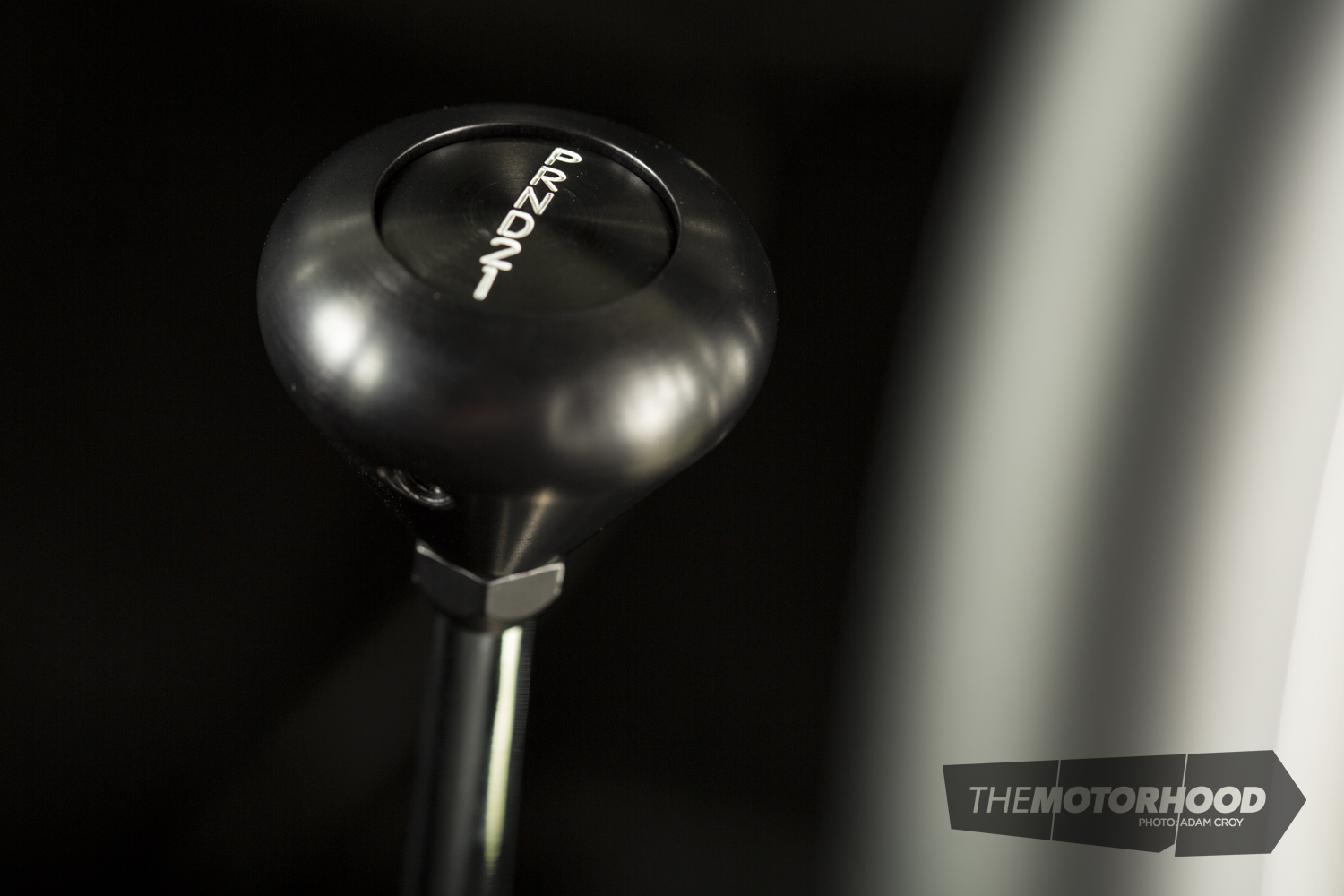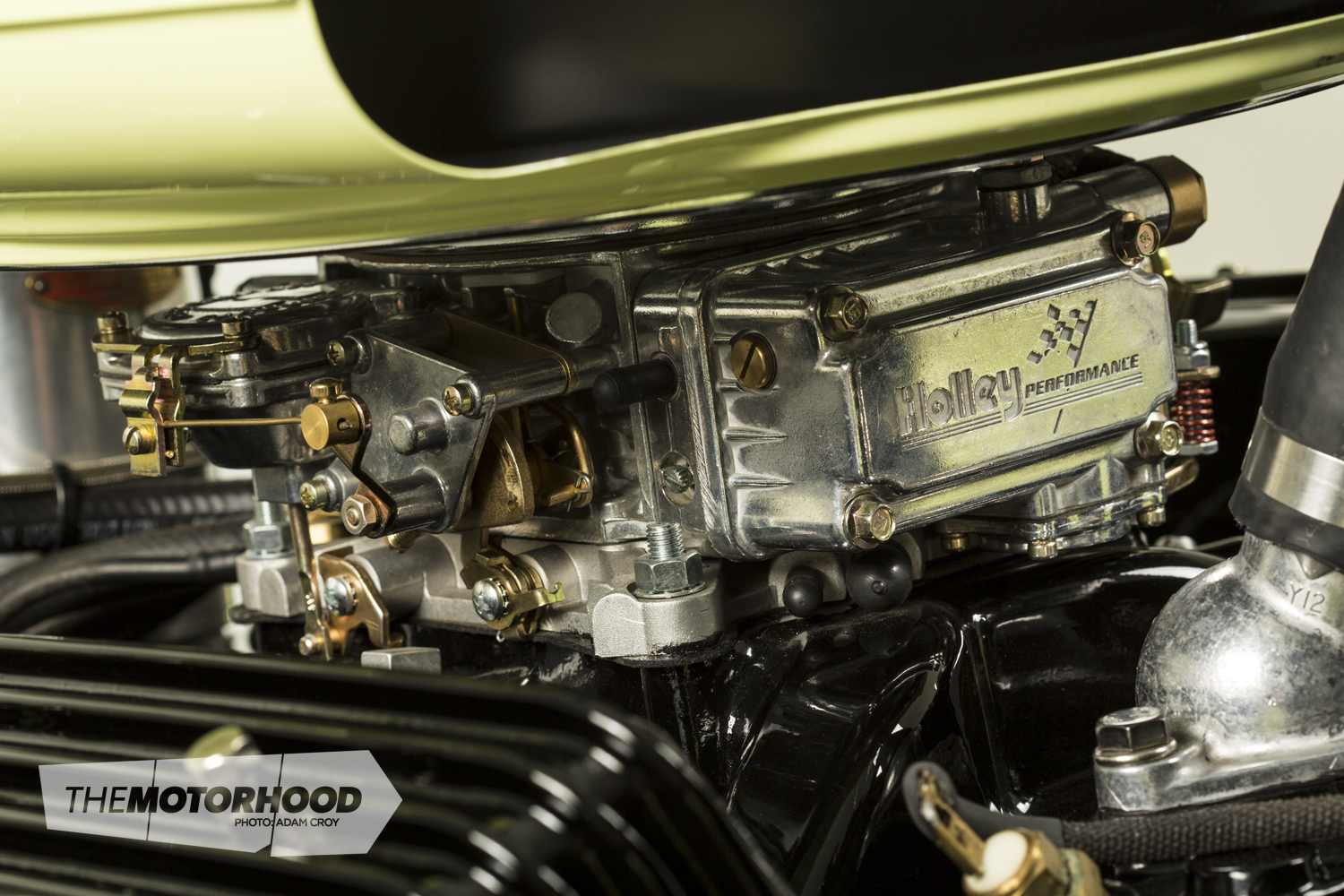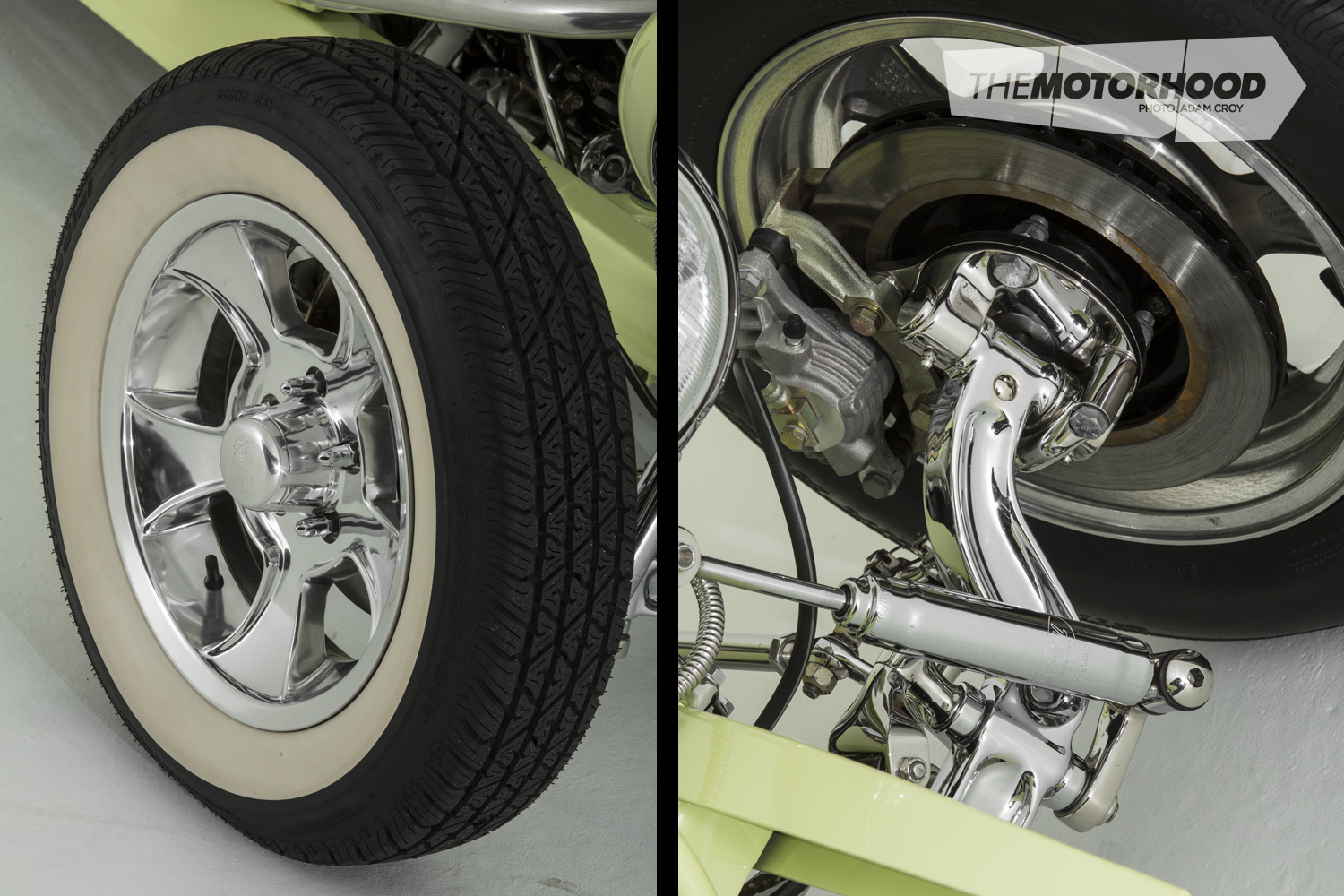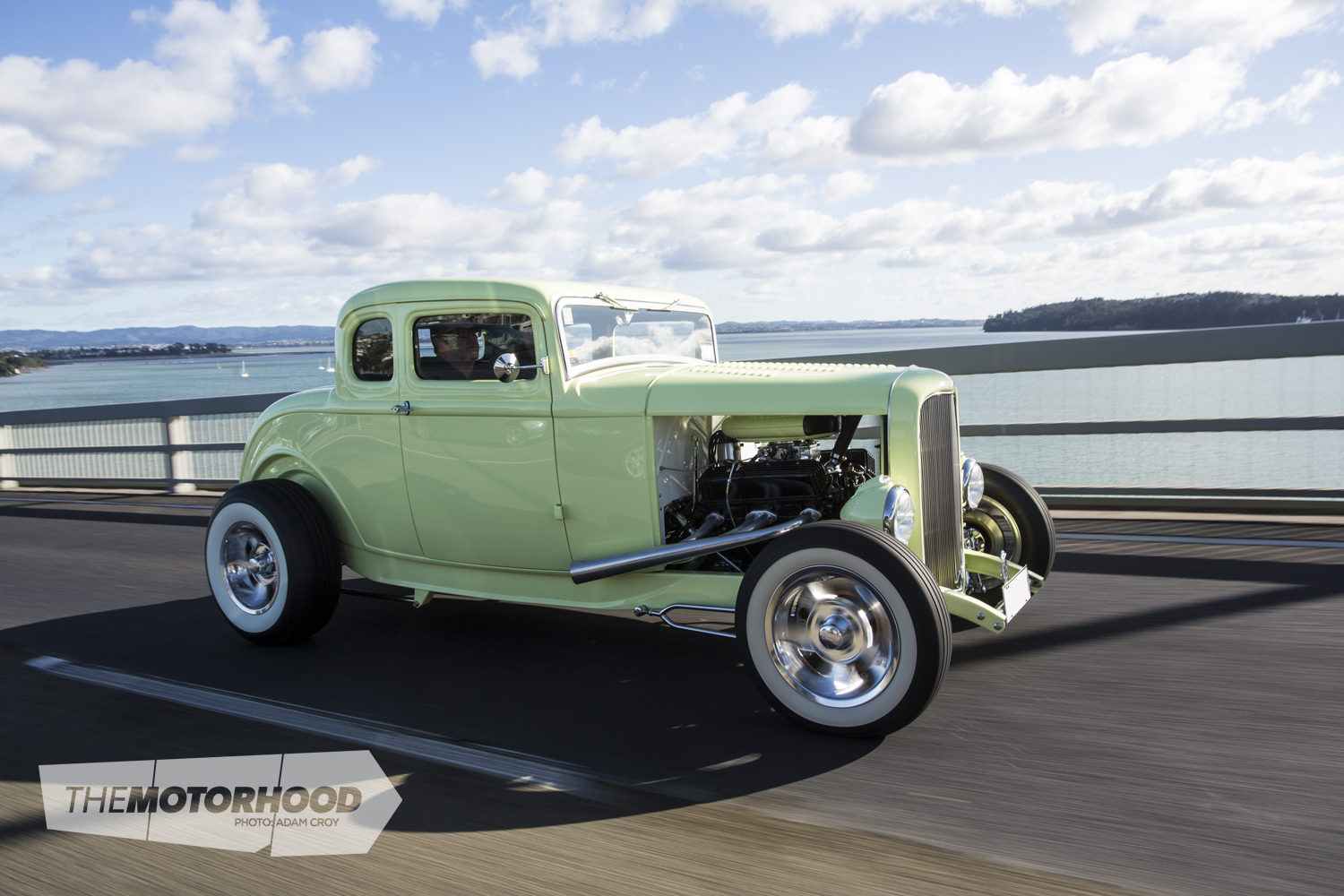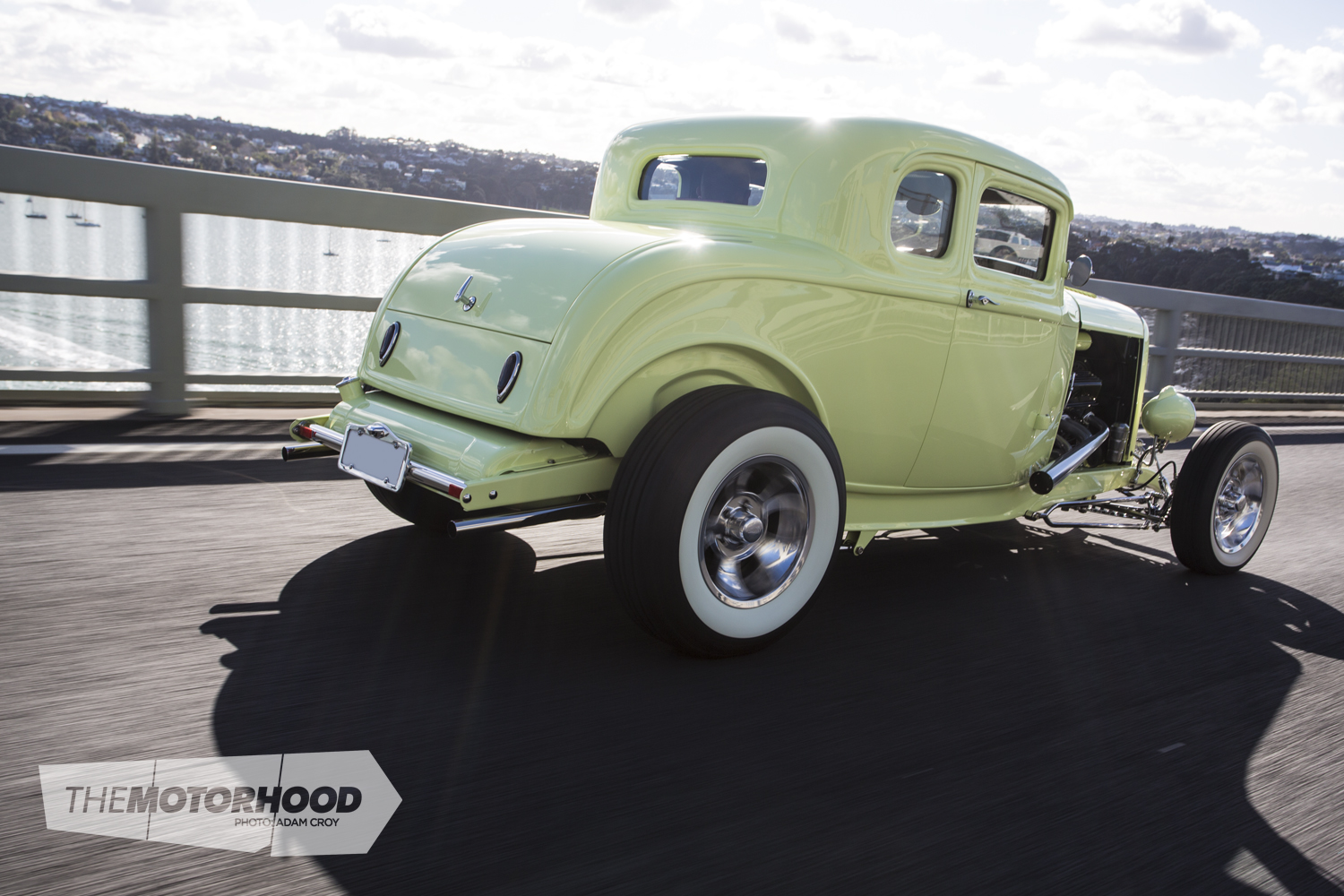data-animation-override>
“He may have marvelled at hot rods as a child, but Laurie Mayo never thought he’d own one, especially not one as flawless as this!”
“I used to look at the hot rods on the Weet-Bix cards back when I was a kid,” said Laurie Mayo, of why the ’32 Ford coupe is his car of choice. “Then I watched American Graffiti, and started to read hot rod magazines.”
This is a story that sounds all too familiar — how many lifelong hot rodders and vehicle builders are there out there who can all pinpoint the moment something like that turned the course of their life towards the bumpy road of automotive passion?

Laurie both is and isn’t one of these guys. While he’s always harboured an interest in and love for hot rods, his career went down a totally different route. Laurie’s work as a jewellery designer sees him having to interpret and fine-tune his clients’ requests into something workable. Applying his years of industry experience and knowledge, he uses that expertise to create fine jewellery pieces that both ‘work’ and meet the client’s criteria.
When it came time for Laurie to think very seriously about building that hot rod he’d always wanted, he knew he’d need to find another industry expert — one who creates fine cars — and, when it comes to crafting exquisite hot rods, Peter Farrant, the proprietor of Auckland Balance, is right up there.

“I went with Peter because he was the only guy who would build me the T-bucket that I originally wanted,” Laurie jokes, “but it also took him all of 38 seconds to talk me out of it!”
It’s a pretty big jump to go from planning a T-bucket to building the exquisite coupe you see here, but one that Laurie has zero regrets about.
Peter explains how the drastic shift in plans took place: “The thing about T-buckets — and hot rodders all know this, because we’ve all built them — is that you just can’t bloody use them that much! I told Laurie that he would be far better off building something that he could use and enjoy, and a 1932 Ford coupe would be perfect.”
As if by chance, it rained torrentially on the day the car was completed and Laurie was finally able to drive it. Despite the rain, the coupe delivered more than he had hoped for, and he knows it was the right choice.

With a new plan in place, Laurie began to focus on his dream ’32 coupe, drawing influences from here, there, and everywhere.
“I’d go to shows and check out the cars, but instead of finding things I liked, I’d look out for the things not to do — that helped me with ideas, which I’d bounce off Peter. It was as if [my usual role] had been totally reversed; I was now the client giving my ideas to the expert, and Peter used his expertise to tell me what would and wouldn’t work.”
Some things, such as the Limefire-style headers and yellow paint job, were a must for Laurie, and, before long, plans for a traditionally styled highboy coupe were in place.

The whole car is based on a Kiwi Konnection chassis, with a Rod Bods Downunder chopped five-window body perched atop the rails. Having the bones of the car at the ready, work could now begin on getting it to sit right — this meant that parts like the So-Cal drilled and dropped front axle, chromed ‘shorty’ shocks, transverse leaf spring, and polished stainless hairpins were obligatory. At the tail end, a Ford nine-inch was a necessity — it’s filled with 31-spline axles and a leisurely 3:1 final drive ratio — and QA1 adjustable coilovers with a GT2 stainless triangular four-bar set-up give that necessary forward rake, as well as great ride and handling properties.

The raked stance so necessary for the highboy is helped by a set of staggered Injector wheels manufactured by Rocket Racing Wheels — measuring 15×4.5 inches and 15×8 inches front and rear, and wrapped in wide-whitewall BF Goodrich tyres — and the stance is bang on.
With that side of things sorted, attention could now turn to the bodywork, where a few problems presented themselves, the biggest of which was at the rear.

Giving a vintage flavour to the coupe are a number of small touches that would be extremely easy to overlook. The most notable is the antique AA badge up front, previously owned by Laurie’s late father. Within the engine bay, the radiator overflow tank is actually an antique milkshake container — “The same as my mum used to have, to make me Milo milkshakes,” Laurie reveals. When the car was complete, he took it around to show her, and she instantly recognized the overflow tank for what it was — it’s a fitting reminder of his childhood love for hot rods.
The alignment of the boot lid was just not acceptable, and was extensively reworked until Peter and Laurie were happy with it. The rear is finished with an intricately handcrafted number plate frame alongside ’39 Ford tail lights, and this traditional styling is replicated up front thanks to a Vintique radiator shell and high-quality Dale’s stainless radiator insert, complete with crank hole — a real throwback to 1932.

Having the ’32 highboy side of things pretty well sorted, attention could now turn to another of Laurie’s key requirements — the yellow paint. While he’d toyed with the idea of an American Graffiti yellow, he couldn’t commit himself to any particular colour. Then, one day, a friend showed Laurie his ’57 Chev convertible.
“As soon as I saw the car, I knew that was the yellow I was after,” Laurie says. “Even better, it was a factory Chev colour, called Colonial Cream.”
The Art Deco–style pastel shade adorning the coupe is often interpreted as lime green, but, however you see it, you can’t argue with the high-class effect it lends the vehicle. The panel and paint work was performed by the talented Tony Buchler and, interestingly, the paint is straight off the gun, with no clear topcoat — a bit of polishing later, and voila!

The beautiful paintwork extends beneath the car, and the undercarriage is just as well detailed and presented as the bodywork. Even aside from the finish, there is no shortage of goodies under the car, from the intricately crafted exhaust system snaking its way rearwards to the finned torque converter and sump covers adorning the B&M TH350 gearbox, and matching finned sump and oil filter covers beneath the small-block Chev engine. For the sake of reliability, Peter went down the tried and tested route when it came time to choose an engine and gearbox, hence the TH350 and 350ci crate motor combo. With 318hp at the rear wheels, the engine has still got more than enough power to get the little coupe moving.
“A big distributor cap just wouldn’t have looked right, so it’s been replaced with a rebuilt Cirello magneto,” Peter says of the beautifully finished engine bay.
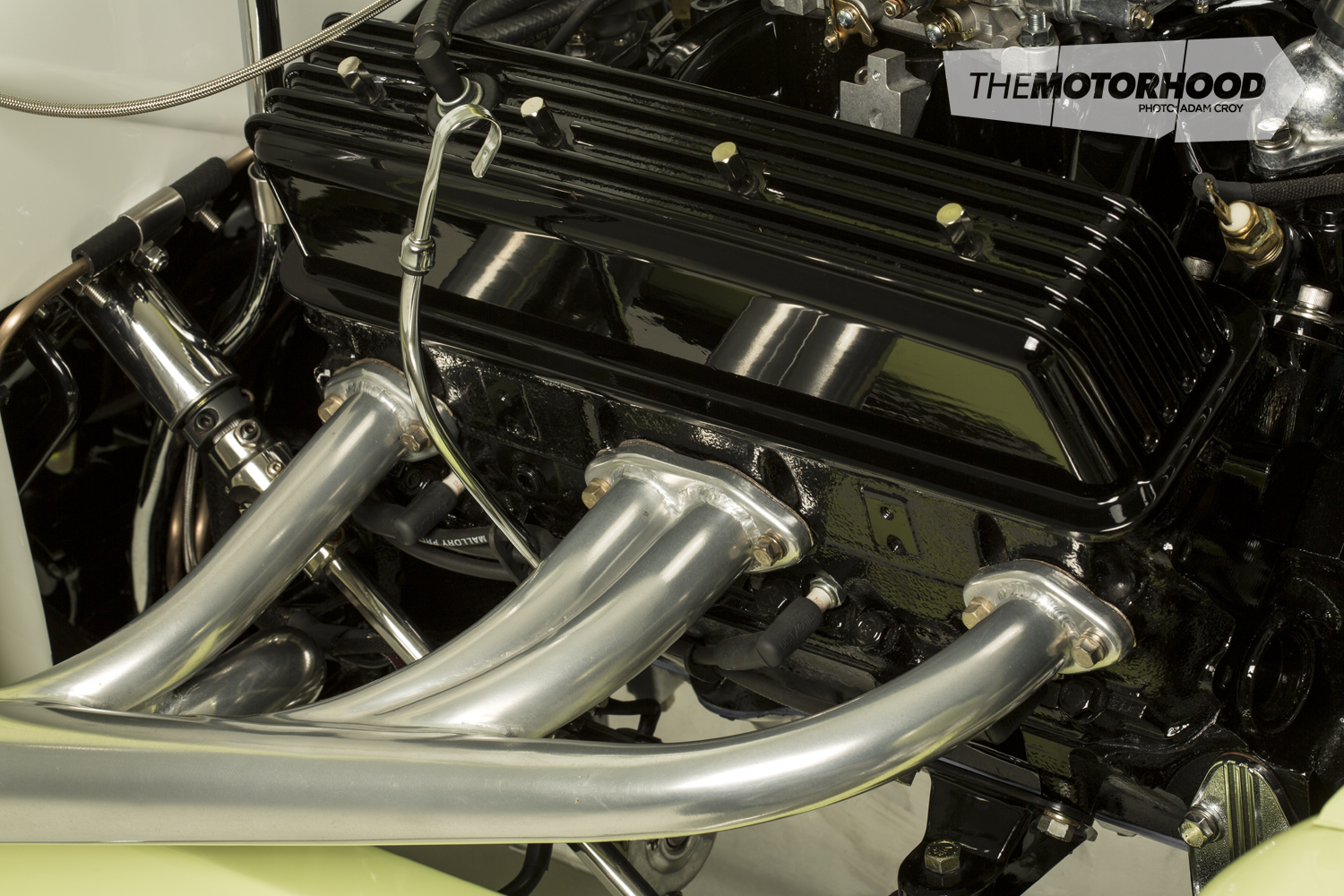
When you’re dealing with a car that has to look ‘just right’, the headers are one of the most important pieces to get perfect. After being less than happy with a pair of off-the-shelf headers, Peter turned to fabricator extraordinaire, Paul Smeets, to get a set of Limefire-style headers custom made. The effort that has gone into creating these works of art is incredible — Paul spent two weeks crafting the pair, and it sure shows. He was also responsible for the engine mounts, as well as a number of mounting brackets, and the attention to detail put into even these most trivial of components should make the overall quality of the build apparent.

This quality is mirrored inside, where the ‘less is more’ approach has been followed through to an incredible standard. There is a very pared-down feel, but it’s far from spartan. The Classic Instruments gauges are a triumph of design, as are the cut-pile plush wool carpet covering the floor and the tuck ’n’ roll upholstery adorning the door cards and Glide Engineering bench seat, masterfully applied by Grant at Grant’s Auto Upholstery.

Just as important are the things that you don’t see — there’s no radio or air conditioning, for starters, but look a little further and you’ll see that the roof lining has been trimmed in ’60s patterned velour and the tuck ’n’ roll trim extends to the firewall. This is, in fact, an upholstered two-piece sliding panel that covers the car’s fuse box, relays, and wiring, cleverly hidden and connected by Graham Weeks.
The high quality of the workmanship that has been lathered on every square inch of the coupe speaks for itself, and Laurie is stoked. “It honestly exceeded all my expectations,” he said of the end result.

That end result is a flawless example of a traditional concept — one that he plans on driving every weekend that he can. At the time of writing, the car’s been finished for only a fortnight and Laurie’s been making the most of it as he’d always planned, including driving it down to our central Auckland studio on a rare sunny day in the middle of winter. Still, much as Laurie loves to drive the coupe, one of his new favourite pastimes is going down to the garage and just taking it all in — if you were lucky enough to fulfil such a childhood dream, wouldn’t you do the same?
1932 Ford coupe
- Engine: 350ci small-block Chev, Chevrolet Performance crate motor, four-bolt mains, nodular cast-iron crankshaft, powdered metal rods, dished cast alloy pistons, 9.1:1 compression ratio, hydraulic flat tappet camshaft, Vortec cast-iron heads, Holley 600cfm carburettor, Cirello magneto, Mallory Pro Wire ignition leads, custom headers, custom exhaust, Hushpower mufflers, Walker radiator, electric fan, antique overflow bottle
- Driveline: B&M TH350, finned alloy torque converter cover, finned alloy sump plate, custom driveshaft, Ford nine-inch diff, 3:1 final drive ratio, 31-spline axles
- Suspension: So-Cal drilled and dropped I-beam front axle, mono-leaf spring, So-Cal shorty chrome front shocks, Holden HQ steering box, Rod-Tech polished stainless stub axles, polished stainless hairpins, QA1 adjustable rear coilovers, GT2 stainless triangular rear four-bar, polished stainless tie rods and ends, polished stainless drag link and ends, So-Cal polished stainless lower front shock mounts
- Brakes: Chrome master cylinder and booster, Holden Commodore VR front calipers, 11-inch rear drums, Lokar handbrake
- Wheels/Tyres: 15×4.5-inch and 15×8-inch Rocket Racing Wheels Injector, 165R15 and 235/75R15 BF Goodrich Silvertown wide-whitewall tyres
- Exterior: Glasurit Colonial Cream, Rods Bods Downunder 1932 Ford five-window body, functioning cowl vent, exposed hinges, Vintique radiator shell, Dale’s stainless radiator insert with crank hole, ’39 Ford teardrop tail lights, handmade rear number plate frame, antique AA badge
- Chassis: Kiwi Konnection chassis
- Interior: Budnik Dragonfly steering wheel, Limeworks steering column, Lokar shifter, Lokar handbrake, Classic Instruments gauges, So-Cal switches, So-Cal pedals, Glide Engineering bench seat, full tuck ’n’ roll upholstery, custom velour headlining, ‘lizard skin’ sound deadening, Heritage cut-pile plush wool carpet
- Performance: 318hp at 4600rpm (at the wheels), 383lb·ft at 4000rpm
This article was originally published in NZV8 Issue No. 124. You can pick up a print copy or a digital copy of the magazine below:






